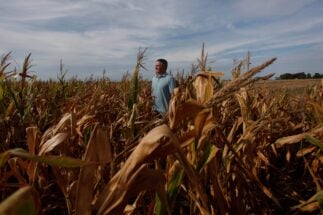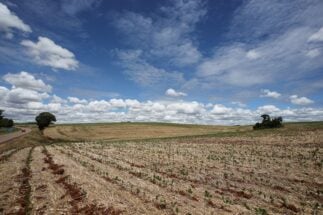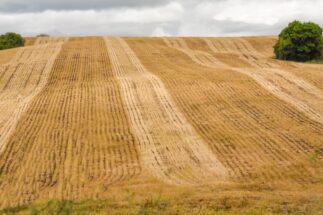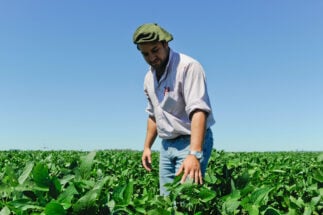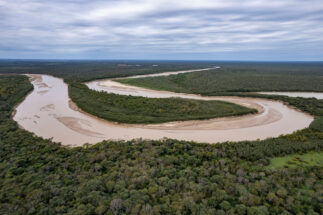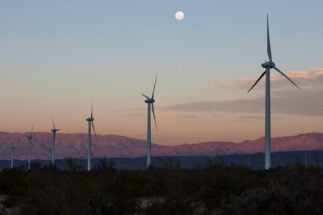Argentina is suffering the effects of a prolonged drought that has brought disruption to its agricultural sector, driven by the La Niña phenomenon, the weather pattern that tends to bring lower rainfall in the country’s key producing regions.
With the region now appearing to enter its third consecutive summer of La Niña, the weather pattern has been a key factor in the difficulties faced by farmers during the current cycle, though specialists are also highlighting that the water deficit is directly linked to climate change.
What is La Niña?
La Niña is a weather phenomenon that causes fluctuations in sea surfaces temperatures in the central and eastern equatorial Pacific, leading to changes in tropical atmospheric circulation, namely winds, pressure and rainfall, and, in turn, impacts on the global climate.
According to the latest report by the National Drought Monitoring Board, 126 million hectares are affected, equivalent to 75% of the agricultural area. The phenomenon is especially felt in the zona núcleo, the “core zone” located in the centre-east of the country, where wheat, corn and soybean production is concentrated.
“This situation has caused a large number of producers to delay sowing while waiting for more water,” said Pablo Mercuri, director of natural resources research of the National Institute of Agricultural Technology (INTA).
According to a recent report by the Rosario Stock Exchange (BCR), the low levels of rainfall make it possible to project a drop in wheat and corn production come harvest in 2023. However, for soybean, long the country’s star crop, a recovery in production is foreseen, with a likely increase in area sown for the first time in six years.
But these remain projections, and for the time being there is no consensus among specialists on the true impact that the drought will have on the Argentine economy. The effects, they argue, will depend to a large extent on international prices.
More than just low rainfall
The third consecutive year of La Niña has brought further challenges for many Argentine farmers still reeling from prolonged drought during the 2021-22 season.
As defined by the World Meteorological Organization, La Niña is a phenomenon that causes fluctuations in ocean temperatures in the central and eastern parts of the equatorial Pacific, in addition to other changes in tropical atmospheric circulation, namely winds, pressure and rainfall.

In Argentina, La Niña generally leads to below-average rainfall, felt most acutely in the “core zone”, meteorologist Leonardo de Benedictis told Diálogo Chino.
José Luis Aiello, of Consultora de Climatología Aplicada, a consultancy in Buenos Aires, underlines this: “We have a strong water deficit in the main areas of agricultural production – that is, [the provinces of] Cordoba, Santa Fe and the centre-north of Buenos Aires.
“This obviously affects crops, because both wheat and corn are very complex when there is possibility of planting in places where there is almost no moisture.”
This is not the first time a “trilogy” of La Niña has been seen in modern times, with the weather phenomenon striking thrice from 1973 to 1976 and 1998 to 2001. But unlike those cycles, this time it is occurring in the context of intensifying climate change. Although there is no direct link between the two phenomena, understanding their interaction is the subject of ongoing research.
For INTA’s Mercuri, the current problem for Argentine soils is related to “cumulative” effects that have occurred over recent years. “There is a progressive prolonging of the dry season, which some research associates with the heavy deforestation registered in the Amazon region, which caused a decrease in the entry of humid winds,” he said.
In the private sector, there is also recognition that the current struggles have roots that go beyond La Niña. “What we see in the last decade is that the word ‘record’ has entered the vocabulary: record rainfall or record lack of water. We are seeing this as an effect of climate change,” said Cristián Russo, head of the Strategic Guide for Agriculture (GEA), a service of the Rosario Stock Exchange.
Juan Borús of the National Water Institute (INA) told Diálogo Chino that “the context is so extraordinary that drawing quick conclusions is too hasty, so it is best to wait for the situation to pass before making an in-depth analysis.”
The impact of drought on crops in Argentina
According to the experts consulted, a return to a normal rainfall pattern may not occur until the first few months of next year.
In its August bulletin, the WMO stated that the probability of the current La Niña episode continuing was 70% for September to November, gradually decreasing to 55% for the following quarter, from December to February 2023.

The timing of La Niña’s passing will have a vital impact on Argentina’s current crop season. The biggest effect, for now, is on wheat, whose cycle traditionally runs from May to December.
A recent release by the Buenos Aires Grain Exchange estimated that wheat production will stand at 17.5 million tonnes – the lowest figure in the last seven years – “as a result of the absence of rainfall”.
“We are heading towards a production disaster,” said Russo, adding that, unlike other seasons, the effects of La Niña “were not compensated for by other [weather] events”.
Although with less intensity than in wheat, setbacks are also expected for the output of corn, which is sown between September and October. The Rosario Stock Exchange similarly attributed this mainly to “the sustained lack of water”.
Faced with this situation, many corn producers will likely opt for a late sowing, and planted area may even break new records, according to the same BCR report. Pablo Mercuri, from INTA, made a similar prediction, stating that there will be a “massive migration” towards second cropping – the sowing during winter – of corn.
We are heading towards a production disaster, as the effects of La Niña have not been compensated for by other weather events
Meanwhile the production of soybean, a crop that is less sensitive to water deficit, is expected to expand. The Buenos Aires Grain Exchange has estimated a 10% increase in total output, a turnaround after several cycles of declines.
“After almost six seasons, the soybean crop might increase in terms of planted area,” Martin Lopez, an analyst at the exchange, told Reuters. He explained that, due to the drought, many producers swapped hectares intended for corn for soybeans.
The specialist added that a soybean area of 16.7 million hectares is expected, 400,000 hectares more than a year ago, and a corn area of 7.5 million hectares, compared to 7.7 million hectares in the 2021-22 season. Soybeans will also benefit from areas normally planted with wheat that have been lost to drought.
The impact in numbers
The changes caused by the drought will have an impact on the Argentine economy, although given the uncertainty of international prices, it is difficult to estimate the scale.
Agricultural consultant Néstor Roulet estimates losses amounting to US$3.3 billion, considering the consequences for wheat, corn and soya. The specialist took into account not only the changes in the sown area, but also the lower yields generated by the water deficit.
For the Buenos Aires Grain Exchange, the expected drop could be higher: according to a report presented to national authorities, the decline will amount to US$4 billion, which would present a 9% fall compared to the previous season.
The Argentine government’s draft budget for 2023, meanwhile, does not provide a precise figure, but the text presented to Congress suggests a more optimistic view than the estimates of the private sector.
Given the volatility of international conditions, observers will likely only gain a clearer picture of the full extent of the impacts of Argentina’s ongoing drought once final figures arrive in 2023.
